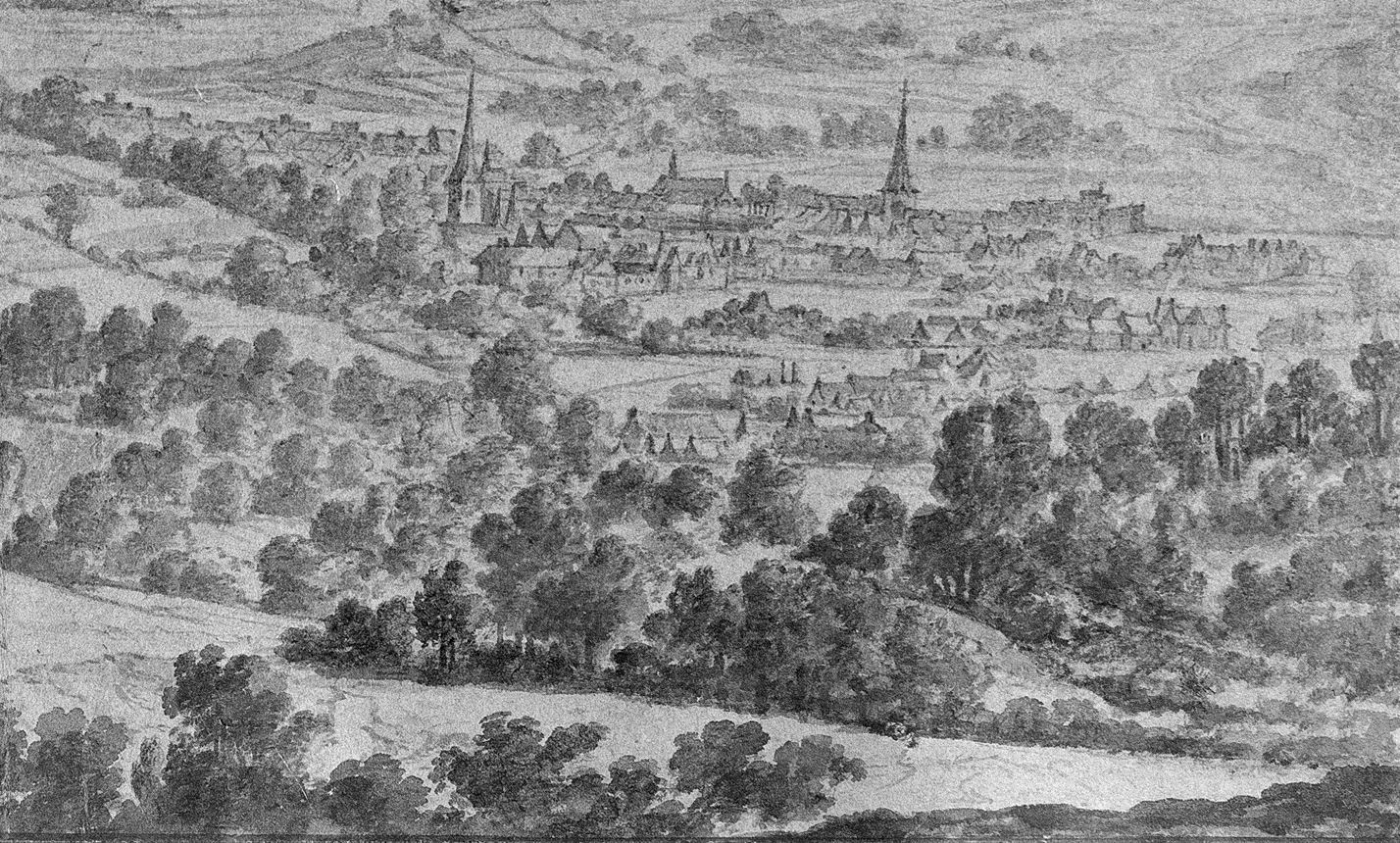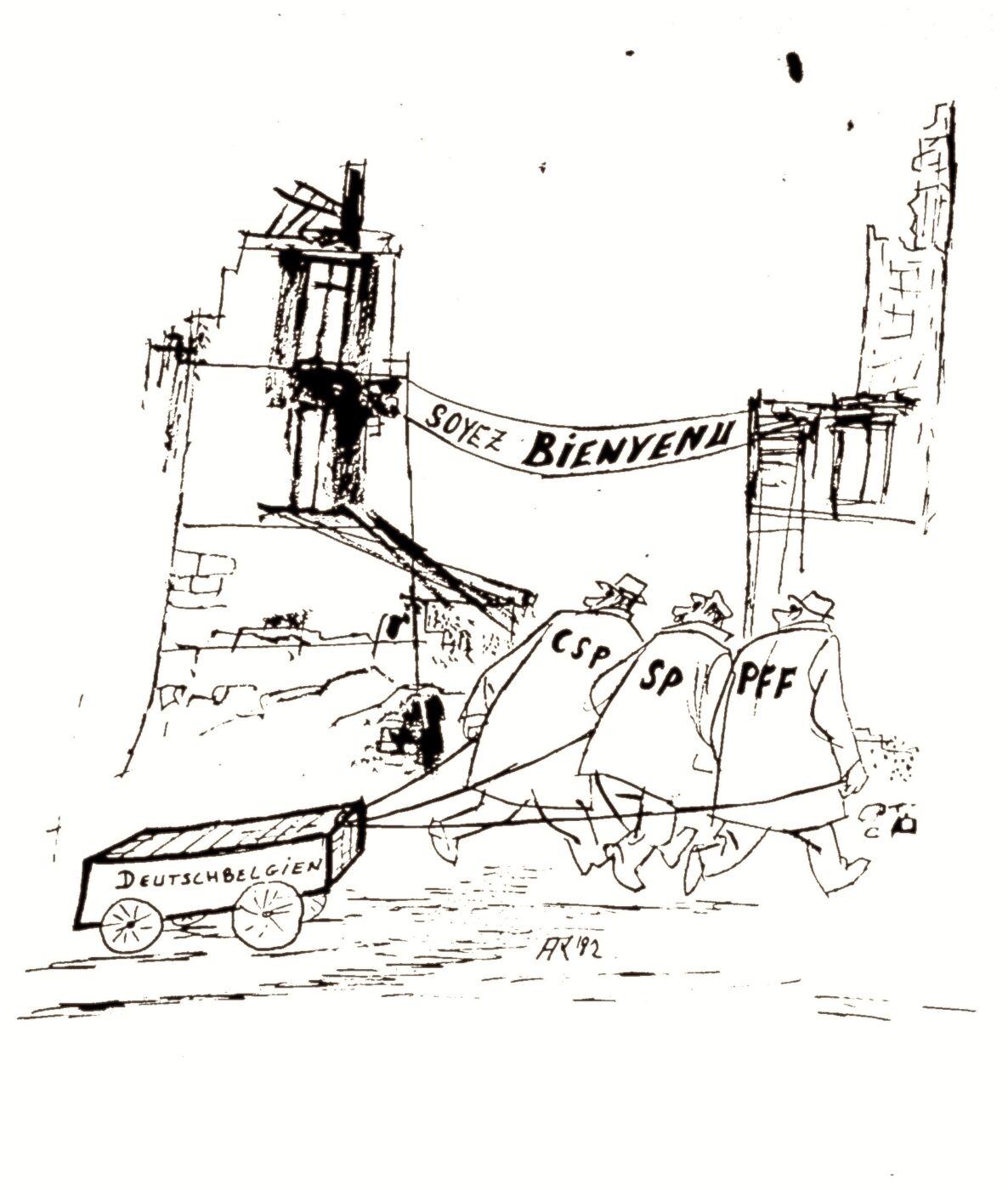The first step should always be to observe carefully what is actually depicted: in this case, three men are pulling a cart with the inscription ‘German Belgium’, a designation for East Belgium that was used by autonomy advocates particularly in the 1970s and 1980s. The men have the names of the three East Belgian traditional parties on their coats: PFF (Liberals), SP (Socialists) and CSP (Conservatives). Shabby buildings or ruins are also depicted, as well as a banner saying ‘Soyez bienvenu’ (Be welcome).
Obviously, the cartoon dates from 1982, as shown by a small number next to the cartoonist’s initials. To be able to classify it, we have to consider the historical context. At the beginning of the 1980s, the second Belgian state reform was being planned and implemented. After Belgium had been divided into cultural communities in the course of the first state reform (1968-1971), the country was now divided into regions. These regions were responsible for the economic development of different areas. What these areas should look like was the subject of lengthy discussions in Belgium and East Belgium.
In contrast to the three traditional parties, the PDB was clearly against the economic affiliation of the German-speaking area to Wallonia at this time. The PDB was a party that advocated the autonomy of East Belgium on an equal footing with Flanders and Wallonia. Since the cartoon comes from the PDB or one of its supporters, it illustrates the mood among the East Belgian parties in a very concise way and, above all, showcases their own arguments:
First, the picture clarifies the discourse that the PDB conveyed vis-à-vis the other parties. The three traditional parties were pulling East Belgium into Wallonia. This is represented by the banner ‘Soyez bienvenu’, which refers to francophone Wallonia. This illustrates the attitude of the PDB, which feared that East Belgium would be Gallicised and absorbed into Wallonia if the area were not protected enough.
But the party’s economic strategy is also revealed: the houses to which the cart is drawn are not intact. Hereby, the cartoonist was slightly overstating the opinion of the PDB. The party did not want to become part of Wallonia economically because they did not want to participate in the economic decline of the area – this is what the ruins stand for. As a reminder, the formerly economically strong area had been in crisis since the 1960s, which intensified in the 1970s and 1980s. The PDB was afraid that this structural weakness of the economy would be transferred to East Belgium if it were annexed to Wallonia. They also argued that culture and the economy were inextricably linked. It is without reason that one speaks of ‘business culture’, for example. The party therefore sought a separate region of East Belgium or a stronger economic link to the Rhineland.
In the end, East Belgium became part of the Walloon Region during the second state reform. From then on, three regions existed in Belgium: Wallonia, Flanders, and Brussels. Since 1999, all parties in East Belgium (except Vivant) have sought economic separation from the Walloon Region and the creation of a ‘fourth region of East Belgium’.

